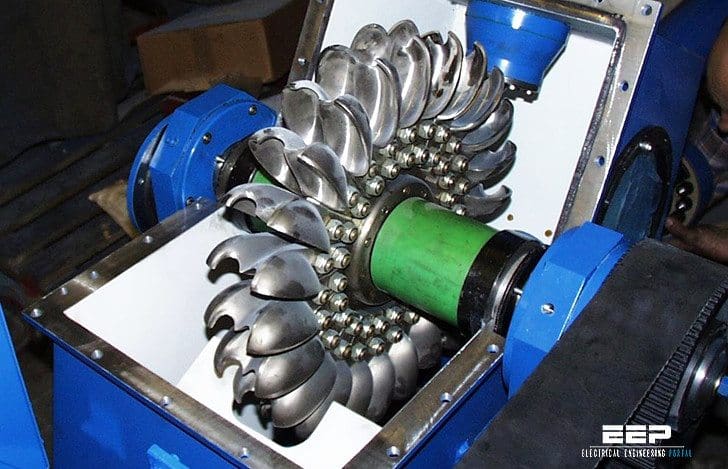Right choice of a turbine
The water power designer has to make a choice on the type of turbine that can be adopted for a particular project.

After the range of head to be handled by a turbine has been evaluated by stream flow analysis and the installed capacity determined from the analysis of the power-generating capacity of the proposed plant, the task of the designer is to choose:
- An optimum turbine type and series,
- The number of power generating units,
- The runner diameter,
- Rotational speed, and
- Runner axis elevation.
The following Bureau of Indian Standard Codes of practices may be referred to for the detailed design of hydraulic turbines and their selections:
- IS:12837-1989 “Hydraulic turbines for mediumand large power houses – guidelines for selection”
- IS: 12800-1993 “ Guidelines for selection of turbines, preliminary dimensioning and layout of surface hydro-electric power houses”:
- Part 1: Medium and large power houses
- Part 2: Pumped storage power houses
- Part 3: Small, mini and micro hydroelectric power houses
One of the important parameters of a turbine is the Specific Speed denoted as ns, which and defined as the speed in r.p.m. at which a turbine of homologous design would operate, if the runner were to reduce to a size which would develop one metric horse power under one metre head.
It is given by the following relation:
![]()
where:
ns = Specific speed of turbine in revolutions per minute (r.p.m.)
n = Rated speed of turbine in revolutions per minute
P = Turbine output in kW, and
H = Rated head in metres.
Once the specific speed (ns) is determined, the chart given in IS: 12837-1989 and reproduced in Figure 1 may be used to determine the type of turbine that may be adopted for the particular project.

The type of turbine selected also depends upon techno-economic considerations of the generating equipment, power house cast and relative benefits of power generation.
The factors given in the following table determine the type of turbine to be used depending upon site conditions.
| Type of Machine | Head variation percent of rated head (m) | Load variation percent of rated outlet | Specific speed (m-mhp) | Peak Efficiency in percent |
| Pelton | 120 to 80 | 50 to 100 | 15 to 65 | 90 |
| Francis | 125 to 65 | 50 to 100 | 60 to 400 | 93 |
| Deriaz | 125 to 65 | 50 to 100 | 200 to 400 | 92 |
| Kaplan | 125 to 65 | 40 to 100 | 300 to 800 | 92 |
| Propeller | 110 to 90 | 90 to 100 | 300 to 800 | 92 |
| Bulb | 125 to 65 | 40 to 100 | 600 to 1200 | 92 |
Additional Notes
The following points may additionally be noted:
1. The performance of a turbine is ideal at the design head.
Therefore in overlapping head ranges selection of type of turbine should consider the head variation existing at site.
2. Turbine efficiency varies with load. Fall of efficiency at part load for Francis and Propeller is much steeper in comparison to that for Kaplan and Pelton turbines. Therefore, necessity of operating turbinesat part loads for longer timeinfluences the choice of turbines in the overlapping head ranges.
Thus in the head ranges where both Kaplan and Francis are suitable.
Similarly, in the overlapping head ranges where both Francis and Pelton could be used, Pelton has advantages over Francis in overall performance level when variation of load and head is higher.
3. Highest specific speed of turbine resulting in higher speed of rotation for generator with consequent reduction in cost of generator. This criteria is very important for selecting-type of turbine from cost consideration in the overlapping head ranges.
Kaplan turbine / Run-of-the-river hydroelectricity – How it works!
Cant see this video? Click here to watch it on Youtube.
Working of Francis Turbine
Cant see this video? Click here to watch it on Youtube.
715 Kw Pelton turbine
Cant see this video? Click here to watch it on Youtube.
Reference: Hydropower Engineering – Version 2 CE IIT, Kharagpur








